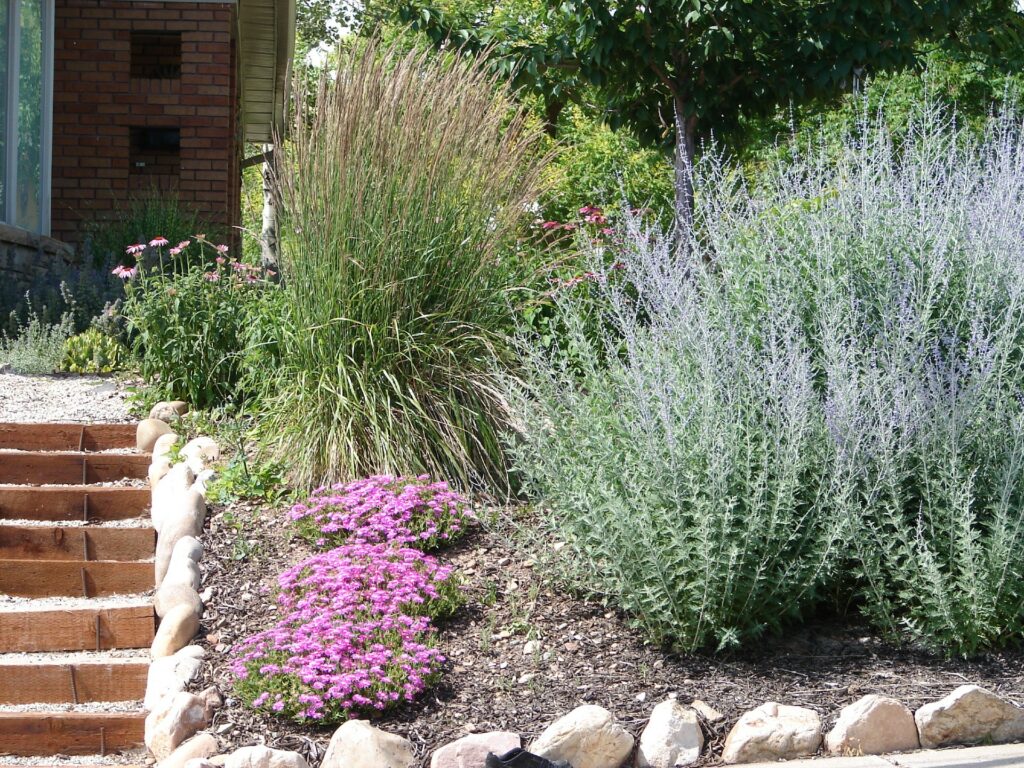The Best Bee Plant for California’s Low Water Gardens

If you reside in California, you constantly deal with the reality of drought. At the end of summer, when things are at their driest, gardeners may find some relief in planting something that requires little water but can continue to help bees continue pollinating. Californians have mastered being good stewards of their water through conservation efforts. California beekeepers and gardeners have mastered doing that while assisting the bees too!
Drought Status: Extreme
Since California seems to be in a constant state of drought emergency, gardeners are working diligently to find low-water plants that are bee friendly. Even scientists are on board to find the best landscape plants and have been relentlessly pursuing projects to examine bees and their plant preferences. Since the state of California is enormous, it has distinctly different plants that thrive in the northern and southern regions. The Central Valley is blessed that the climate makes growing things easier (hence, delicious wine regions). In contrast, Southern California gardeners face challenges in keeping plants thriving and allowing bees and other pollinators a place to work.
Southern California Specific
Focusing on Southern California, gardeners, along with beekeepers and scientists, have found that the plant most consistently preferred by bees is the Russian Sage. At first glance, Russian Sage is often mistaken for lavender by passersby. However, there are no fooling bees. Bees know their stuff and are consistently attracted to this plant. Research studies show the Russian Sage stands in the top three choices of all native bees. The observations yielded the same results repeatedly, and now gardeners are incorporating this beautiful purple bloom in their Southern California gardens.
The Russian Sage is native to the central regions of Asia, so hot and dry conditions do not negatively affect the plant’s steady growth. Russian Sage is also resilient to extreme colds, but Southern California doesn’t have the same issues with that extreme. The bees are likely attracted to Russian Sage because it repeatedly blooms through the seasons, providing a dependable resource for bees. It is an excellent source of nectar.
Many gardeners choose to plant the Russian Sage with other bright pollen flowers to enhance the attraction and provide multiple sources. One of the most popular partners of Russian Sage is the Coneflower, which is Echinacea. If you know anything about Echinacea, it has medicinal value and is beautiful. Since Echinacea is also coveted by bees and requires little water, it is easy to see why this combination has proven to be quite the sanctuary and source for bee nutrition and thriving gardens in Southern California. Russian Sage and Echinacea are eco-friendly, low-water plants offering longer blooms than other plants and flowers.
Why So Big?
The Russian Sage can take over its space (and then some), and that is why some gardeners have previously opted out. At full size, Russian Sage can reach six feet! Gardeners with more space restrictions or who choose to have a smaller version of this plant can use Blue Spire and Little Spire versions, which are 4 and 2 feet, respectively. However, the good news for gardeners in Southern California is that Russian Sage is easy to grow and needs little water. This plant can take full sun and genuinely prefers it.
Don’t Forget About the Water
Although California will likely suffer from a continuous drought indefinitely, it does not take much to provide bees with the water they need to survive. However, bees, like all living things, need water to survive! Hydrated bees are the happiest bees. So, if you garden and are thinking about planting some drought-resistant plants, please consider leaving a water source for the bees too. Bees can’t swim but often meet their demise, desperately seeking water. There are simple ways to provide water sources, but please include a little stick or sponge as a perch for these non-swimmers. Some gardeners use a bird bath, and others just a bucket or low pie pan with some rocks and sticks in it for the bees. They actually prefer less pristine water, so do not feel you have to change the water for them as you would a household pet!
As climates change and Californians are required to adapt, so is every other living thing in the state. Thinking about the other critical species that may need a little help along the way is an environmentally responsible way to make changes for oneself. Bees, a critically important part of the ecosystem and pollination, can significantly benefit from some small gardener gestures by planting low-water bee-friendly plants and providing a water source. It is not necessary to put a big, neon sign for bees to know you’ve done your due diligence in putting in the best plants and a watering spot, the olfactory on these little buzzers can sense out all things good! If you plant it, they will come.
